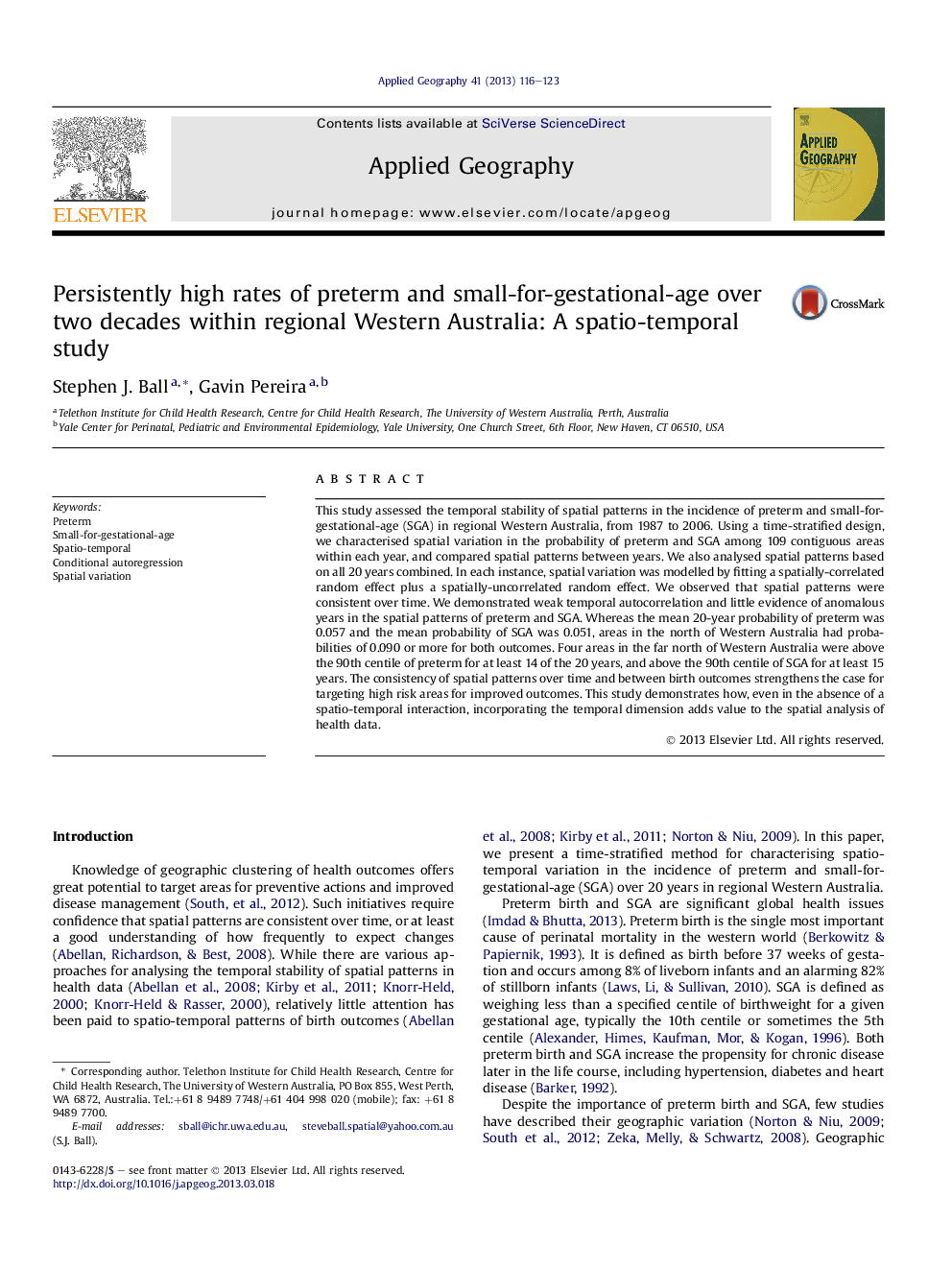| Article ID | Journal | Published Year | Pages | File Type |
|---|---|---|---|---|
| 83249 | Applied Geography | 2013 | 8 Pages |
Abstract
This study assessed the temporal stability of spatial patterns in the incidence of preterm and small-for-gestational-age (SGA) in regional Western Australia, from 1987 to 2006. Using a time-stratified design, we characterised spatial variation in the probability of preterm and SGA among 109 contiguous areas within each year, and compared spatial patterns between years. We also analysed spatial patterns based on all 20 years combined. In each instance, spatial variation was modelled by fitting a spatially-correlated random effect plus a spatially-uncorrelated random effect. We observed that spatial patterns were consistent over time. We demonstrated weak temporal autocorrelation and little evidence of anomalous years in the spatial patterns of preterm and SGA. Whereas the mean 20-year probability of preterm was 0.057 and the mean probability of SGA was 0.051, areas in the north of Western Australia had probabilities of 0.090 or more for both outcomes. Four areas in the far north of Western Australia were above the 90th centile of preterm for at least 14 of the 20 years, and above the 90th centile of SGA for at least 15 years. The consistency of spatial patterns over time and between birth outcomes strengthens the case for targeting high risk areas for improved outcomes. This study demonstrates how, even in the absence of a spatio-temporal interaction, incorporating the temporal dimension adds value to the spatial analysis of health data.
Related Topics
Life Sciences
Agricultural and Biological Sciences
Forestry
Authors
Stephen J. Ball, Gavin Pereira,
